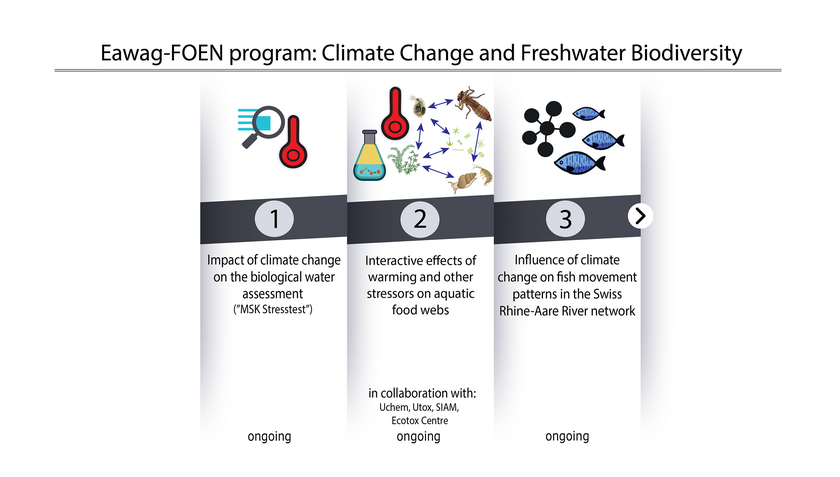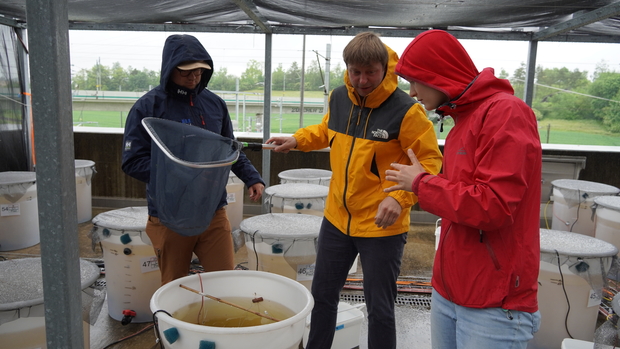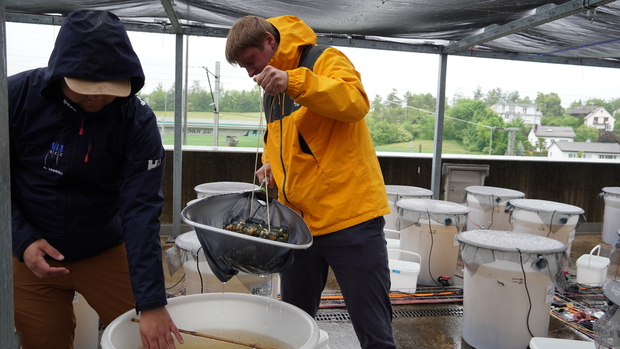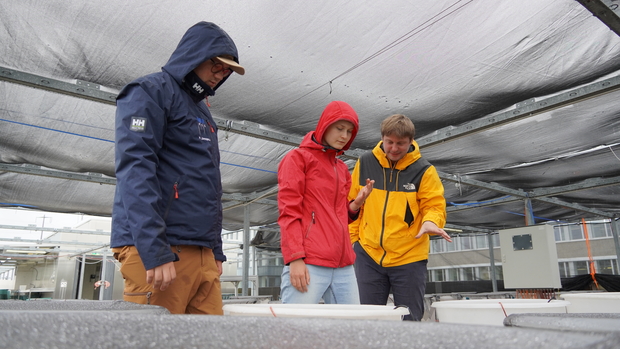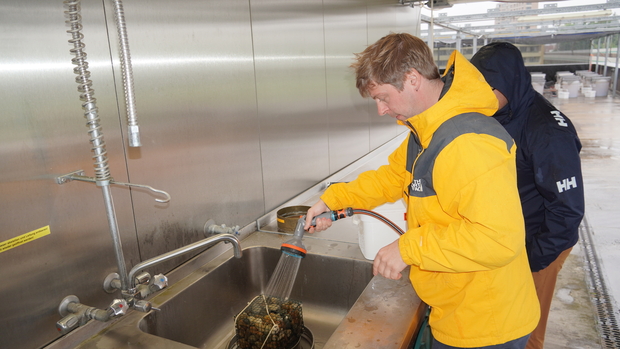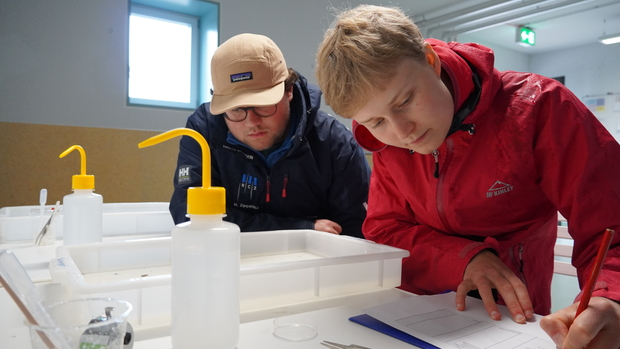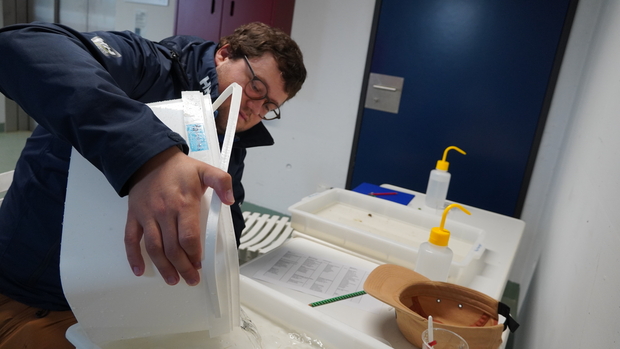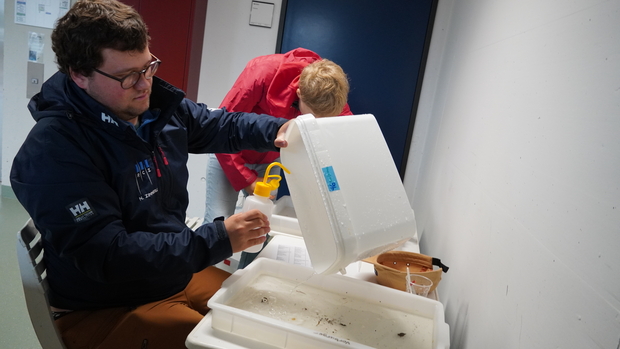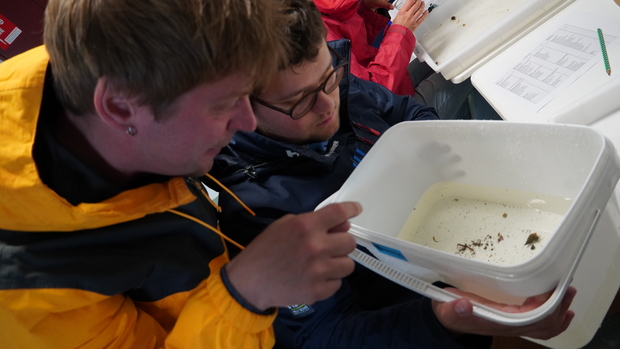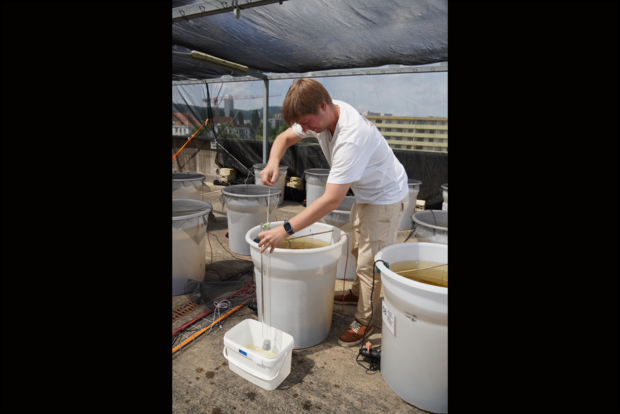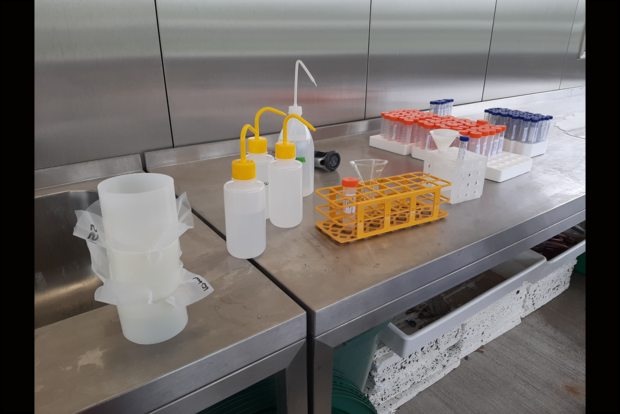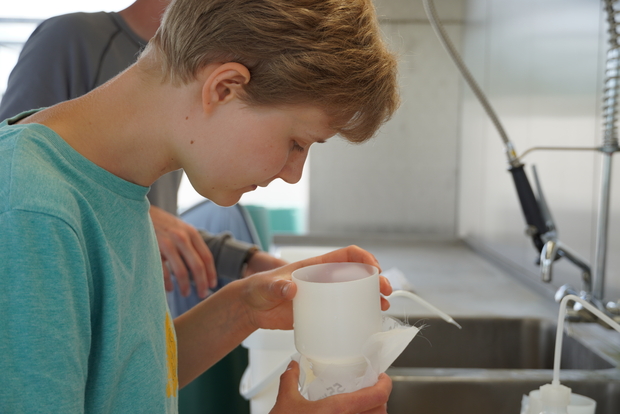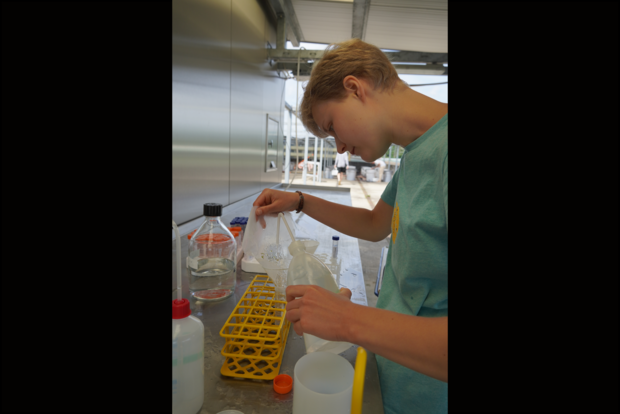Climate Change and Freshwater Biodiversity
A multi phase research program by Eawag and the Swiss Federal Office for the Environment (FOEN)

Increasing water temperatures and altered hydrological regimes due to climate change increasingly impact freshwater habitats, which are also subject to other human-induced stressors such as structural degradation and pollution. The joint effects of multiple stressors on freshwater biodiversity are difficult to predict because of interactions among stressors and species in aquatic food webs. Their understanding is crucial, though, for evidence-based conservation of freshwater biodiversity, and for the use of biodiversity-based indicators in environmental impact assessment. With the support of the Swiss Federal Office for the Environment (FOEN), Eawag is addressing this challenge using models, field work and experimental approaches.
Phase 1 – Impact of climate change on the biological water assessment (“MSK Stresstest”)
Will climate change impact bioindicator-based water quality assessment in Switzerland now and in the future?
Background
In Switzerland, as in many countries in Europe and around the world, water quality assessment is often based on the use of indices that reflect the presence and absence of indicator taxa, also known as bioindicators. It is already well know that climate-change induced environmental warming is causing species to move both northwards and upwards (in elevation). Such range shifts, in altering the local composition of communities, may affect our interpretation of the biological assessment of water bodies, in particular, if bioindicator taxa are disproportionately affected by warming (Figure 1). This work, supported by the Swiss Federal Office for the Environment (FOEN), provides necessary insight about the continuing effectiveness of surface water quality monitoring in the era of climate change for policymakers.

Images obtained from Biorender, istockphoto.com and dreamstime.com under license.
Research Goals and Methods
We assessed the degree to which biological indicators of water quality will be affected by warming under various scenarios of climate change in Switzerland (Figure 1). We used existing data on stream on the presence or absence of stream macroinvertebrates collected as part of the Swiss Biodiversity Monitoring Program (BDM) and the National Surface Water Quality Monitoring Program (NAWA) and cantonal monitoring programs between 2010 up to 2019. Within these datasets, the Ephemeroptera, Plecoptera, and Trichoptera (EPT) taxa are resolved to species level, while the other taxa are generally resolved to the level of family. We used a species distribution modelling approach to assess the thermal affinities of macroinvertebrate taxa in Swiss streams while controlling for the influence of other environmental variables including water flow velocity, insecticide application rate, habitat quality and land-use. We then simulated the impact of temperature change scenarios (-1 to +8 °C) on local community composition and tested whether temperature change alone would have an impact on three biological indices: EPT species richness, the IBCH index, and the SPEARpesticides index.
Results
Our model predicted that 70% of macroinvertebrate taxa will experience increased occurrence probabilities under a warming scenario of +2 °C. While increased species richness would also potentially increase the value of various biological indicators, our findings suggest that the three indicators which we focused on here will not be heavily affected by temperature change over the next few decades, if we assume a scenario of modest warming (e.g. +2 °C, Figure 2). We note that the species distribution modeling approach that we used relies on a number of assumptions: unlimited dispersal limitation, the lack of evolutionary thermal adaptation, and the lack of influence of species interactions (among others). Further, our approach slightly over-predicts index values at low temperatures and under-predicts them at high temperatures relative to observed values within the scope of the observed temperature range. This suggests that the model is less temperature-sensitive than are the observed index values. Nevertheless, despite these limitations, our findings suggest that we can rely on current measures of water quality to remain useful in the coming years in the absence of extreme warming.
We invite you to read the article published in Ecological Indicators for further details.


Dr. Imran Khaliq
Scientist
Send Mail
Phase 2 – Interactive effects of warming and other stressors on aquatic food webs
Does climate change alter the effects of other human-induced stressors on aquatic ecosystems?
Background
Multiple stressor effects on freshwater ecosystems
Global climate change brings on rising temperatures and more frequent and extreme weather events, such as heatwaves and warm spells. These will have both immediate and lasting consequences for Earth’s biomes, including impacts on lentic (still water) and lotic (running water) freshwater ecosystems. There is still a limited understanding of how freshwater ecosystems will respond to higher mean temperatures and temperature extremes, particularly when unpredictable interactions with other stressors occur. These stressors include agricultural inputs such as pesticides, nutrients or fine sediment, as well as structural habitat degradation (Figure 1). Stressor interactions may lead to meliorating (antagonistic) or exacerbating (synergistic) instead of simply additive effects. A deeper understanding of their interplay will therefore require experimental approaches.

Figure 1. Freshwater ecosystem consisting of different trophic levels comprising producers, consumers, and predators of the food web. Climate change related stressors, such as elevated temperatures and heatwaves (red box), along with agrochemical stressors like pesticides or nutrients (grey box) represent multiple stressors that can have interactive effects on individuals, populations, and communities (Graphic Source: Markus Hermann, Eawag).
Experimental research with mesocosms
To study multiple stressor effects on aquatic food webs, we use various types of mesocosms as experimental units, comprising semi-natural communities of differing complexity. Owing to the available research infrastructure at Eawag to record and manipulate various temperature scenarios, mesocosms experiments will be conducted in experimental pond and flume ecosystems.
Direct vs. indirect single and combined effects
Increased temperatures and pesticides, as single and combined stressors, have the capacity to induce direct effects on communities of different trophic levels of a freshwater ecosystem (Figure 2A-C). Increased temperature may also directly affect the environmental fate of a pesticide (Figure 2D). Direct adverse temperature and pesticide effects on one trophic level may affect an adjacent trophic level (Figure 2E, F). These effects may lead to cascading food web effects either through bottom-up (Figure 2G) or top-down effects (Figure 2H). Apart from the direct effects induced by warming and pesticides, indirect effects may result from species interactions.
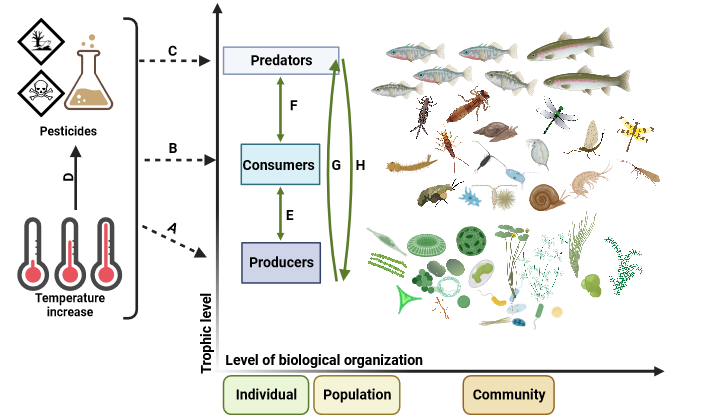
Figure 2. Direct effects of increased temperature and pesticides, single and in combination, on different trophic levels of a freshwater ecosystem, including producers (A), consumers (B) and predators (C). Increased temperature may affect the environmental fate of a pesticide (D) ergo the effects on aquatic biota. The direct effects of increased temperatures and pesticides may induce indirect effects between trophic levels, including adjacent trophic levels (E, F) and/or cascading effects across several trophic levels (G, H) (Graphic Source: Markus Hermann, Eawag).
Research Goal
Within this project, led by Eawag with support of the Swiss Federal office for the Environment (FOEN), we investigate the single and combined effects of stressors across various trophic levels in freshwater food webs. By doing so, we want to comprehend, predict and potentially mitigate adverse multiple stressor effects on freshwater ecosystems to preserve aquatic biodiversity.
The overall project goal is to deepen our knowledge on how multiple stressors in the context of global warming affect freshwater communities as well as ecosystem processes and function. Since studies that examine the underlying mechanisms of multiple stressor effects are scarce and often lack environmental realism, full-factorial experimental designs will be used to disentangle interaction effects. This approach will support the assessment of how single and combined stressors contribute to alterations in aquatic biodiversity and freshwater ecosystem characteristics. Our findings are of interest and important for environmental policy makers and water managers but also for future chemical risk assessment.
Phase 3 - Influence of climate change on fish movement patterns in the Swiss Rhine-Aare River network
Background
During the last century, Switzerland has drastically modified its rivers for electricity production and flood prevention. This has led to habitat fragmentation and disruption of fish migration. Consequently, species such as salmon and sturgeon that migrate between freshwaters and the ocean have gone extinct. Barriers in the rivers are also a major challenge to species moving between different freshwater habitats during their lives. Cold-water species are further facing severe negative effects by rising temperatures. To balance energy production and fish movement under a changing climate, knowledge about timing, routes and accessibility to cold-water refugia of different riverine fish species is needed.
Research Questions & Methodical Approach
In this project, we build an acoustic receiver network in the Rhine-Aare River network during 4 phases (s. figure 1). For this, we will deploy 200 acoustic receivers in the Rhine and the Aare including the Limmat, the Reuss, the Thur and the Saane tributaries, and tag around 900 fish of 12 different species with acoustic transmitters (see table 1). Both acoustic tags and receivers will be equipped with temperature sensors. Each fish will further be equipped with passive integrated transponders (PIT-tags) which can be activated and recorded by transmitting antennas. For each tagged fish, we will, besides individual length and weight, collect a small piece of fin for genetic analyses of population structur, take a picture for phenotypic analyses, and use scales for age- and past growth determination.
Our three main questions, all of major relevance for practice, are (see also figure 2):
- What are the species- and population specific migration routes / movement patterns?
- When do fish migrate? – Seasonal and diel patterns of upstream and downstream movements under the influence of water temperature and discharge.
- Which stretches of the rivers and refugia (e.g. backwaters/ floodplains, lakes and tributaries) are of particular importance?

Importantly, the hydrophone network will remain installed beyond the duration of the project and be open to other researcher institutions, cantonal authorities, private consultancy companies and other stakeholders. Such institutions can all tag fish with acoustic transmitters, release them in the network and obtain their data from a central database. The telemetry network will be part of the European Tracking Network enabling tracking across borders.
Research Goal
This project, led by EAWAG with support of the Swiss Federal office for the Environment (FOEN), will run from 2024 to 2028. In this period, we will identify movement patterns for several of the most important and vulnerable fish species and populations (based on the genetic structure) under changing environmental conditions like rising temperatures. This project will thereby create needed knowledge on large-scale migration patterns to aid the decision-making regarding hydropower mitigation. More, this project will identify species-specific ultimate barriers and accessibility to cold-water refugia during heat waves.
Collaboration
Link to the project homepage
Publications
Involved Eawag research departments
Outreach
MSc Thesis Projects
Follow this link for a description of available MSc Projects. Note that there are always additional possibilities.
So: If you're interested in our research, it is best to simply contact us or come by for a visit.

